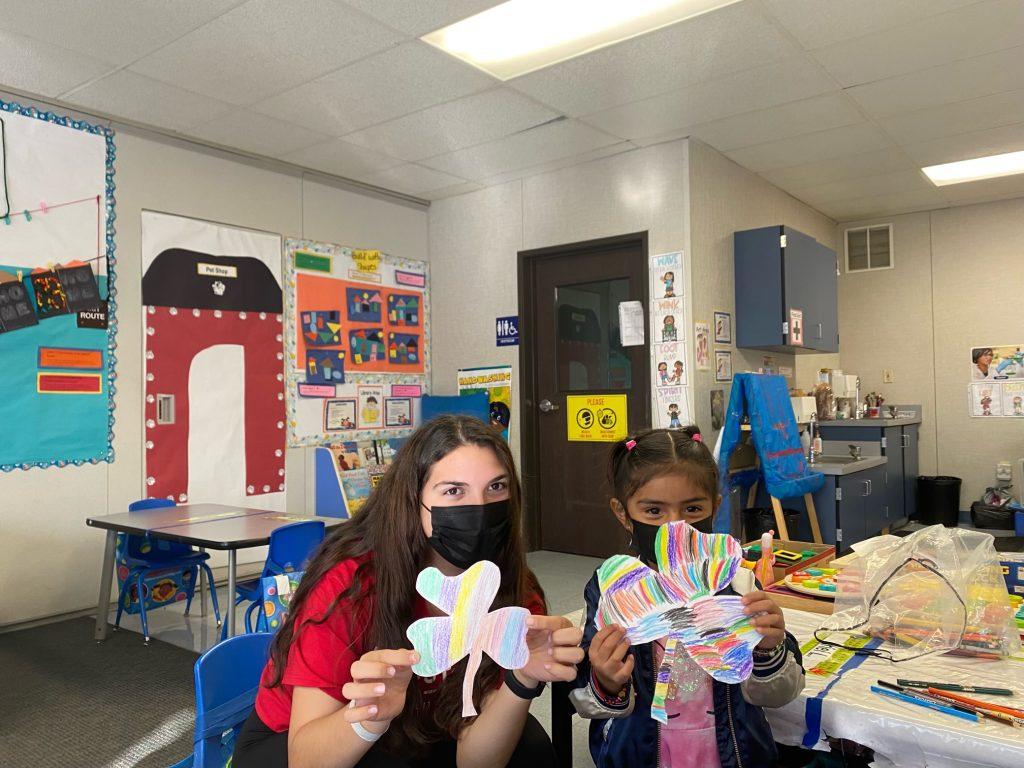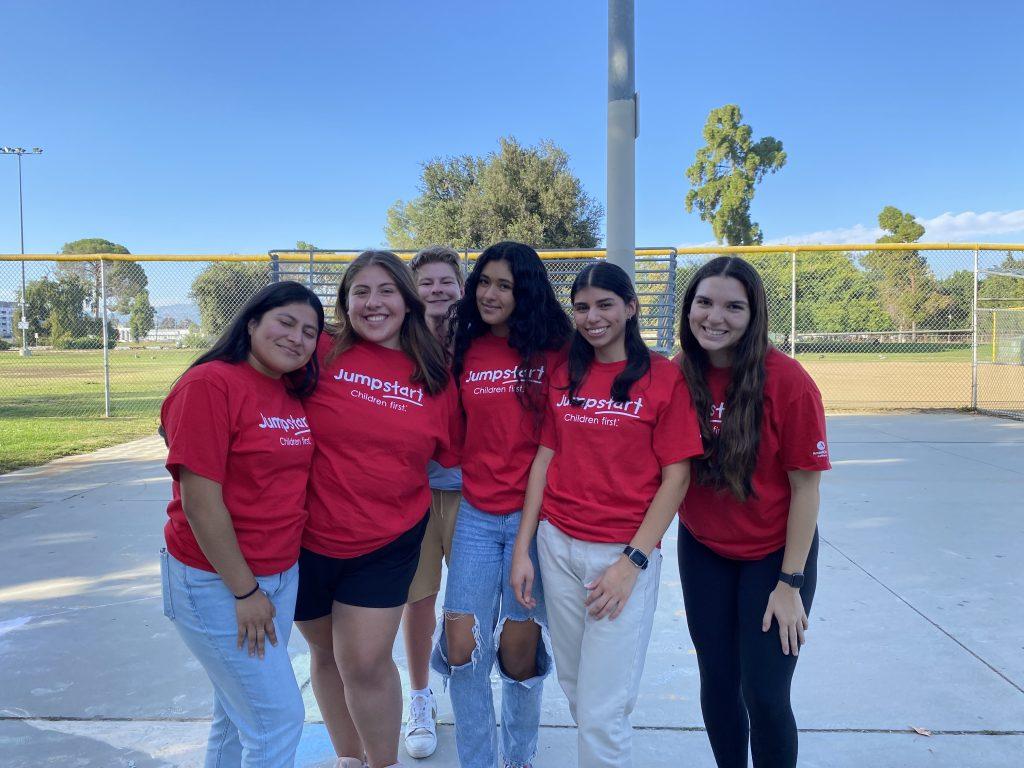
In 2021, Kelsey Carlton, junior and Jumpstart team leader, was in a Jumpstart classroom reading the class a book about a chameleon. Out of nowhere, a student came up to her, gave her a hug and said he loved her, Carlton said.
“It was just something I will always hold on to forever,” Carlton said. “You may not think you’re making an impact in these children’s lives, but that little action that he did just proves that you really are making a difference.”
Jumpstart is a national organization aimed at decreasing the achievement gap in the U.S., according to the Pepperdine Jumpstart website. The achievement gap is the difference between the academic performance of low-income or minority students and their wealthier or white counterparts, according to EducationWeek.
Pepperdine introduced Jumpstart as an opportunity for student employment in 2002, wrote Tess Marmé, campus champion for Jumpstart and associate director of student employment, in a Nov. 17 email to the Graphic. In the early 2000s, students often asked about opportunities to work with children.
At the time, Jumpstart was a new organization looking for student workers, Marmé wrote. Associate Deans of Student Affairs Brad Dudley and Kindelee Pfremmer De Long worked on a grant to bring Jumpstart to Pepperdine.
“The Jumpstart program is working toward the day when every child in America will enter kindergarten prepared to succeed,” Marmé wrote.
Teams of six to eight Pepperdine students go to schools across Los Angeles twice a week to provide “early literacy intervention and socio-emotional learning skills” to preschool students, Marmé wrote.
Pepperdine’s Jumpstart program is partnered with 12 classrooms and about 240 students, Marmé wrote. Jumpstart teams work with preschoolers for an entire school year.

Jumpstart’s slogan is “children first,” Carlton said. Jumpstart teaches children from low-income neighborhoods who start kindergarten 60% behind their affluent peers, Marmé wrote.
“When children start behind, they are likely to stay behind,” Marmé wrote. “A child not reading at grade level by the end of third grade is three times more likely to drop out of high school.”
Jumpstart conducts pre- and post-assessments of the children in order to track the developments they make, Marmé wrote. Last year, 91% of Jumpstart students improved in language and literacy, according to the Jumpstart website.
An additional 73% of Jumpstart children showed average, above average, superior or very superior test scores in an assessment at the end of the year, according to the same website.
Each Jumpstart team teaches a curriculum based on a book they read for the day, Carlton said. Jumpstart asks the children to recall key points from the stories they read and helps them with their vocabulary through flashcards.
After reading and vocabulary practice, Carlton said the class will do an activity related to the book they read. Then, her team will get the kids moving through song or dance. Finally, Carlton said the class gathers in various “centers” focusing on art, writing, plays, books or puzzles.
Her most prominent memories from childhood come from different “pockets of positivity” in her life, Carlton said. She tries to give this to the preschoolers she teaches through smiles, high fives, hugs, paying attention to them or general positivity.
“If you can bring a smile or laughter to one of these children, I think that’s making a difference,” Carlton said.
Working with the students is a good challenge, said Cora Lau, junior and Jumpstart team leader. Adaptability is key to teaching the students — Lau realized having students teach a lesson helps maintain their engagement.
“I like that it’s never the type of job where you can completely nail it,” Lau said. “You never know what the kids are going to say and what they’re going to do.”
The time commitment with Jumpstart can be stressful during busy periods of the school year, Lau said. However, Jumpstart helps her keep a healthy distance from her academics.
“When you’re with your team or the other people in Jumpstart, it’s a really good community of people so it [school] doesn’t feel super heavy,” Lau said.
Carlton also enjoys the community offered by Jumpstart, she said. She’s connected with students whom she wouldn’t normally meet through Jumpstart. Carlton particularly relates to her Jumpstart peers because of the work-study aspect of the program.
“You really just get to meet all different kinds of people,” Carlton said. “And it is a work study program, so it’s most likely people that you can relate to in the sense of maybe financials or maybe just the same kind of growing up.”
Overall, Carlton said she loves working with children. She plans to continue to be a part of Jumpstart her senior year.
“You could be having the worst day of your life, and as soon as you step into a classroom, it takes one kid just to look at you and say, ‘Hi, Jumpstart,’ and that just brightens up your whole day,” Carlton said.
___________________
Follow the Graphic on Twitter: @PeppGraphic
Email Millie Auchard: millie.auchard@pepperdine.edu
